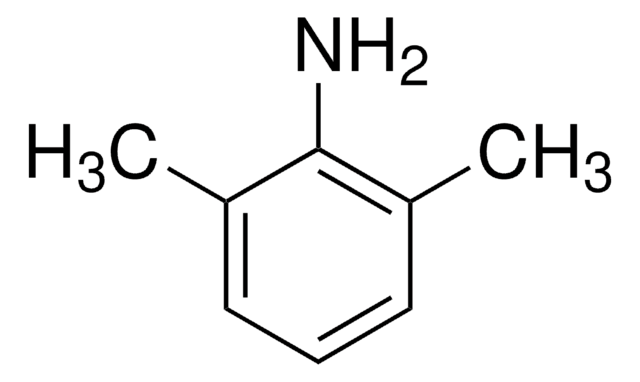Wichtige Dokumente
PHR1319
Trichlorethylen
Pharmaceutical Secondary Standard; Certified Reference Material
Synonym(e):
TCE, Trichlorethen
About This Item
Empfohlene Produkte
Qualität
certified reference material
pharmaceutical secondary standard
Qualitätsniveau
Agentur
traceable to USP 1601827
Dampfdichte
4.5 (vs air)
Dampfdruck
61 mmHg ( 20 °C)
Analysenzertifikat (CofA)
current certificate can be downloaded
Selbstzündungstemp.
770 °F
Methode(n)
HPLC: suitable
gas chromatography (GC): suitable
Brechungsindex
n20/D 1.476 (lit.)
bp
86.7 °C (lit.)
mp (Schmelzpunkt)
−84.8 °C (lit.)
Dichte
1.463 g/mL at 25 °C (lit.)
Anwendung(en)
pharmaceutical (small molecule)
Format
single component solution
Lagertemp.
2-30°C
SMILES String
Cl\C=C(\Cl)Cl
InChI
1S/C2HCl3/c3-1-2(4)5/h1H
InChIKey
XSTXAVWGXDQKEL-UHFFFAOYSA-N
Suchen Sie nach ähnlichen Produkten? Aufrufen Leitfaden zum Produktvergleich
Allgemeine Beschreibung
Anwendung
Sonstige Hinweise
Fußnote
Signalwort
Danger
H-Sätze
Gefahreneinstufungen
Carc. 1B
Lagerklassenschlüssel
6.1C - Combustible acute toxic Cat.3 / toxic compounds or compounds which causing chronic effects
WGK
WGK 3
Flammpunkt (°F)
188.6 °F - closed cup
Flammpunkt (°C)
87 °C - closed cup
Analysenzertifikate (COA)
Suchen Sie nach Analysenzertifikate (COA), indem Sie die Lot-/Chargennummer des Produkts eingeben. Lot- und Chargennummern sind auf dem Produktetikett hinter den Wörtern ‘Lot’ oder ‘Batch’ (Lot oder Charge) zu finden.
Besitzen Sie dieses Produkt bereits?
In der Dokumentenbibliothek finden Sie die Dokumentation zu den Produkten, die Sie kürzlich erworben haben.
Kunden haben sich ebenfalls angesehen
Protokolle
GC Analysis of Class 2 Residual Solvents on OVI-G43
US EPA Method TO-17: GC Analysis of Volatiles on VOCOL® after Collection/Desorption using Air Toxics Tube
US EPA Method 8260: GC Analysis of Volatiles on SPB®-624 after Purge & Trap using "K" Trap, Fast GC Analysis
Unser Team von Wissenschaftlern verfügt über Erfahrung in allen Forschungsbereichen einschließlich Life Science, Materialwissenschaften, chemischer Synthese, Chromatographie, Analytik und vielen mehr..
Setzen Sie sich mit dem technischen Dienst in Verbindung.










